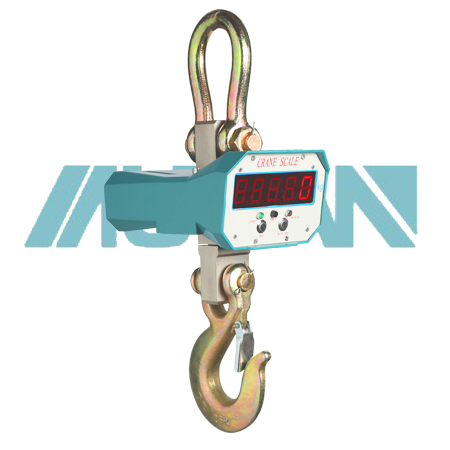 中文版
中文版



Welcome to contact us by phone:0086-0312-7969888
When using electronic crane scales, it's crucial to prioritize safety, accuracy, and proper handling to ensure efficient operations and prevent accidents. Here are key considerations and things to pay attention to when using electronic crane scales:
Adhere to the specified load capacity of the electronic crane scale. Exceeding the maximum load capacity can lead to inaccurate readings, equipment damage, or failure.
Regularly calibrate the electronic crane scale according to the manufacturer's guidelines. Calibration ensures accurate weight measurements and should be performed whenever the scale is relocated or subjected to significant changes.
Conduct pre-operation and post-operation inspections to check for any signs of damage, wear, or malfunction. Address any issues promptly, and perform routine maintenance as recommended by the manufacturer.
Ensure that the electronic crane scale is securely attached to the lifting apparatus (crane or hoist) using the provided hooks or shackles. A secure attachment prevents accidents and ensures accurate weight measurements.
Center the load on the hooks or attachments of the crane scale to avoid uneven weight distribution. Improper centering can lead to inaccurate readings and potential instability during lifting.
Avoid overloading the electronic crane scale, as it can compromise the accuracy of the weight measurements and may lead to equipment failure. Know and adhere to the scale's rated capacity.
Lift and lower the load smoothly to minimize swinging or swaying. Sudden movements can affect the stability of the load and compromise the accuracy of weight measurements.
Allow the load to stabilize before taking weight measurements. Readings taken while the load is still in motion may not be accurate.
Consider the environmental conditions in which the electronic crane scale is used. Protect the scale from extreme temperatures, moisture, and other environmental factors that may impact its performance.
If the electronic crane scale is battery-powered, regularly check the battery status. Ensure that the batteries are adequately charged or replaced to prevent unexpected power failure during operations.
If the scale has wireless connectivity, ensure a stable connection. Verify that the data transmission is reliable and that the scale is compatible with any remote displays or recording devices.
Ensure that operators are properly trained in the use of electronic crane scales. Training should cover correct attachment procedures, safe lifting practices, and proper interpretation of weight readings.
Follow established safety procedures for lifting operations. This includes securing the area, using appropriate personal protective equipment, and communicating effectively with other team members involved in the lifting process.
Record weight measurements for documentation and reporting purposes. Some electronic crane scales may have data recording features or the ability to transmit data wirelessly.
Always refer to the manufacturer's guidelines, user manual, and safety recommendations specific to the electronic crane scale model being used.
By paying careful attention to these considerations, operators can help ensure the safe and accurate use of electronic crane scales in various lifting and weighing applications. Regular training, maintenance, and adherence to safety protocols contribute to the overall efficiency and reliability of these essential lifting tools.

X